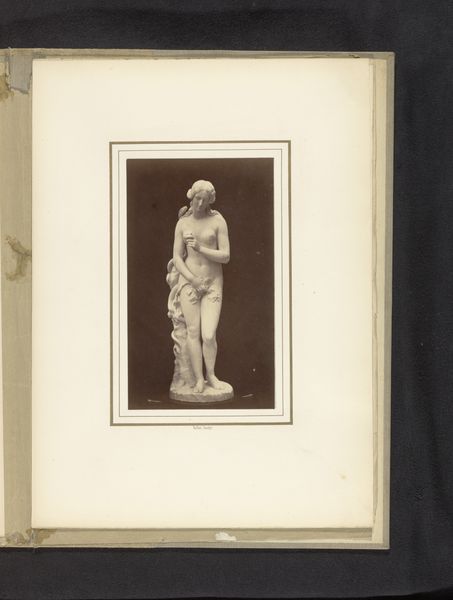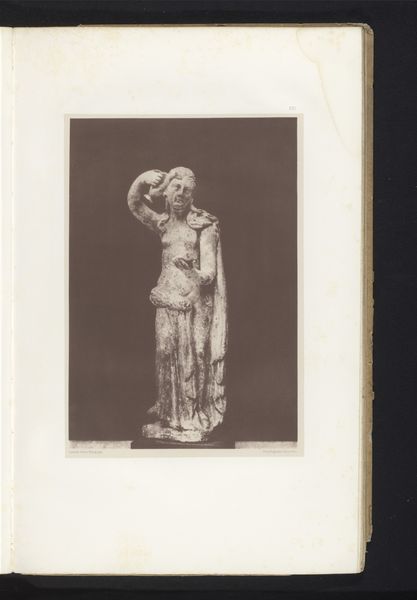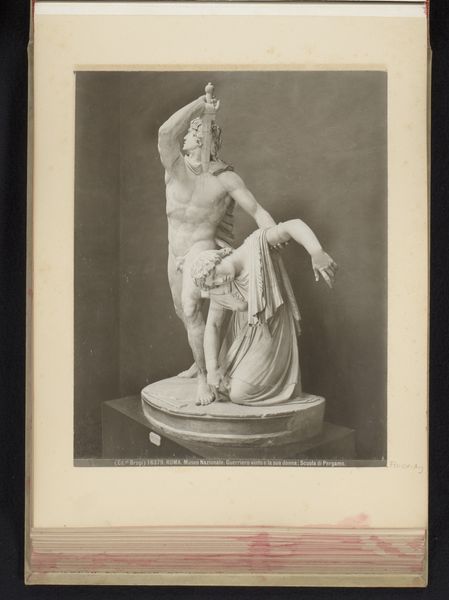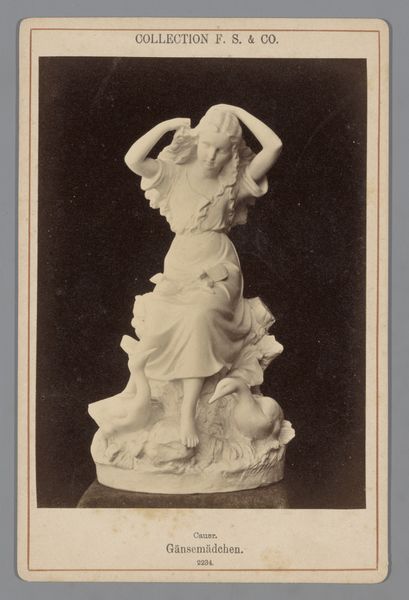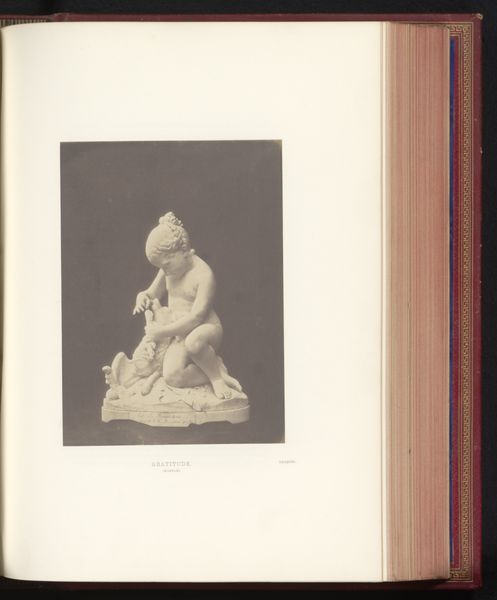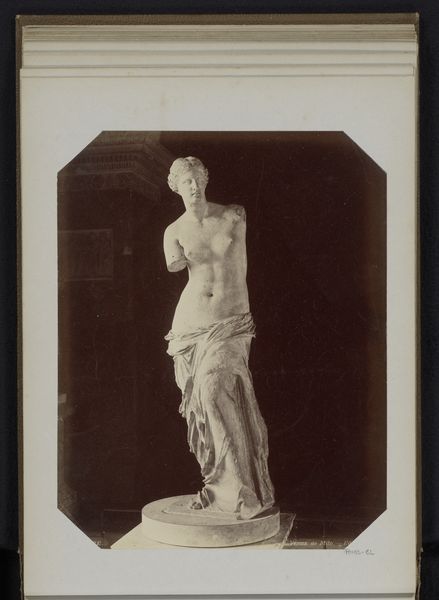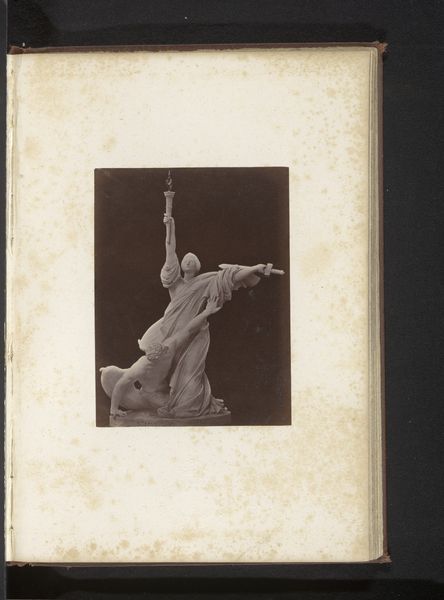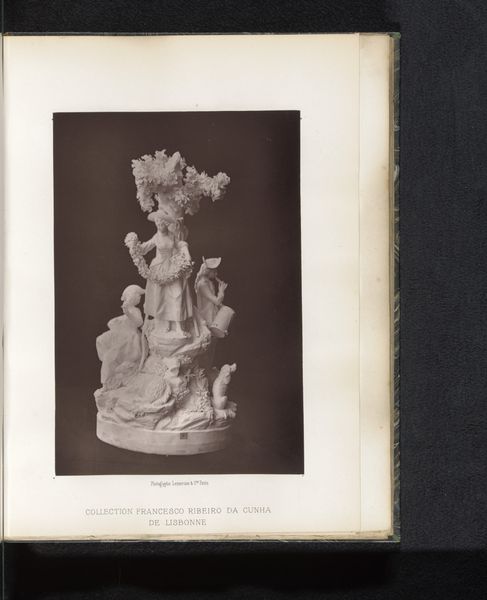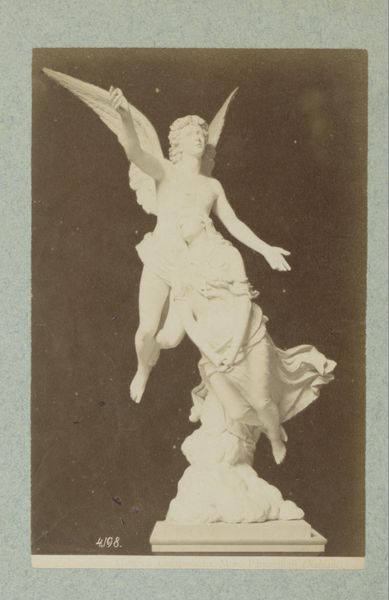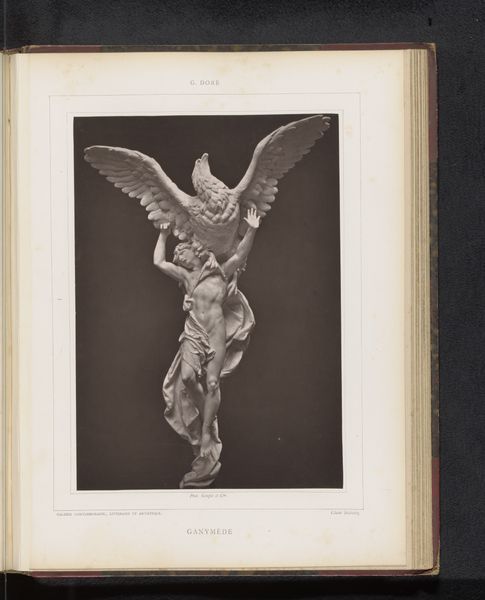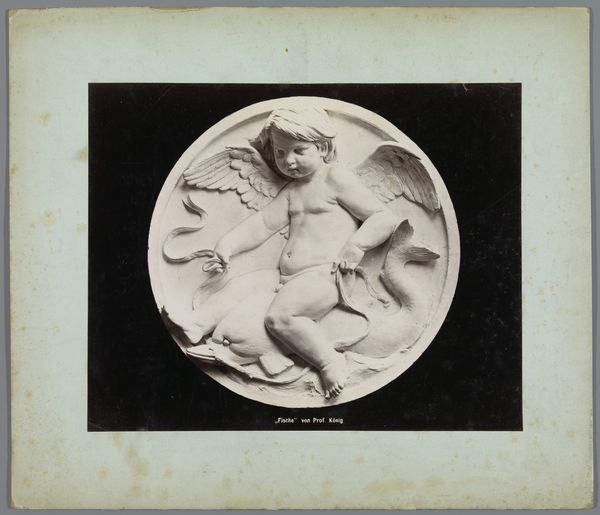
photography, sculpture
#
portrait
#
sculpture
#
greek-and-roman-art
#
classical-realism
#
figuration
#
photography
#
sculpture
#
nude
Dimensions: height 200 mm, width 141 mm
Copyright: Rijks Museum: Open Domain
Curator: Immediately striking, isn’t it? The photograph depicts Leopold Borbone's sculpture from before 1859, titled "Sculpture of a woman and a dragon." Editor: Absolutely. There's something unsettling yet serene about it. The stark lighting emphasizes the smooth, coldness of the material – most likely marble. You immediately see that the classical forms seem… subverted. Curator: Precisely. Borbone’s choice to depict this classical subject matter with an embracing nude female form is powerful, and how her gesture looks aloft and protective. What narrative do you sense here? Editor: It's certainly interesting, the choice of dragon as the submissive creature in contrast with classical mythology of women and fantastic beast. I see a critique embedded in it. I can only speculate that there were socioeconomic anxieties to this visual rhetoric? I am curious about this Grillet jeune. What are we able to glean of this photographer's practice during this time? Curator: You are spot on to ask, as this sculpture and how Grillet chose to depict the work engages a host of archetypes – the damsel and the beast, a woman of the ancient worlds, of civilization overcoming what is primal – I suggest this all points to a desire for idealized power relations during a time when gendered labor was changing quickly. Editor: So, this photo provides evidence of this sculptor’s status, as well as a way to spread Borbone's work beyond those who could physically encounter it. Photography creating commodity status and creating access, while upholding these tropes that feel almost self-satirizing given today's sociopolitical norms. Curator: Precisely. The continuity of these visual symbols and their resonance through time highlights deeper, more persistent societal narratives. And the re-staging through photography certainly affects meaning as well. Editor: Agreed. Looking at this piece, understanding the economic framework and labor surrounding both its sculptural origins and photographic dissemination is essential to grasping its complex statement on women in this specific historical context. It really gives a sense of what were this artist, patron, and photographer attempting to convey. Curator: Absolutely; considering both the imagery and how that imagery becomes available brings many factors to the light. Editor: Thanks. It is so curious to think how a still life brings forward issues of gender, capital and so much more!
Comments
No comments
Be the first to comment and join the conversation on the ultimate creative platform.
